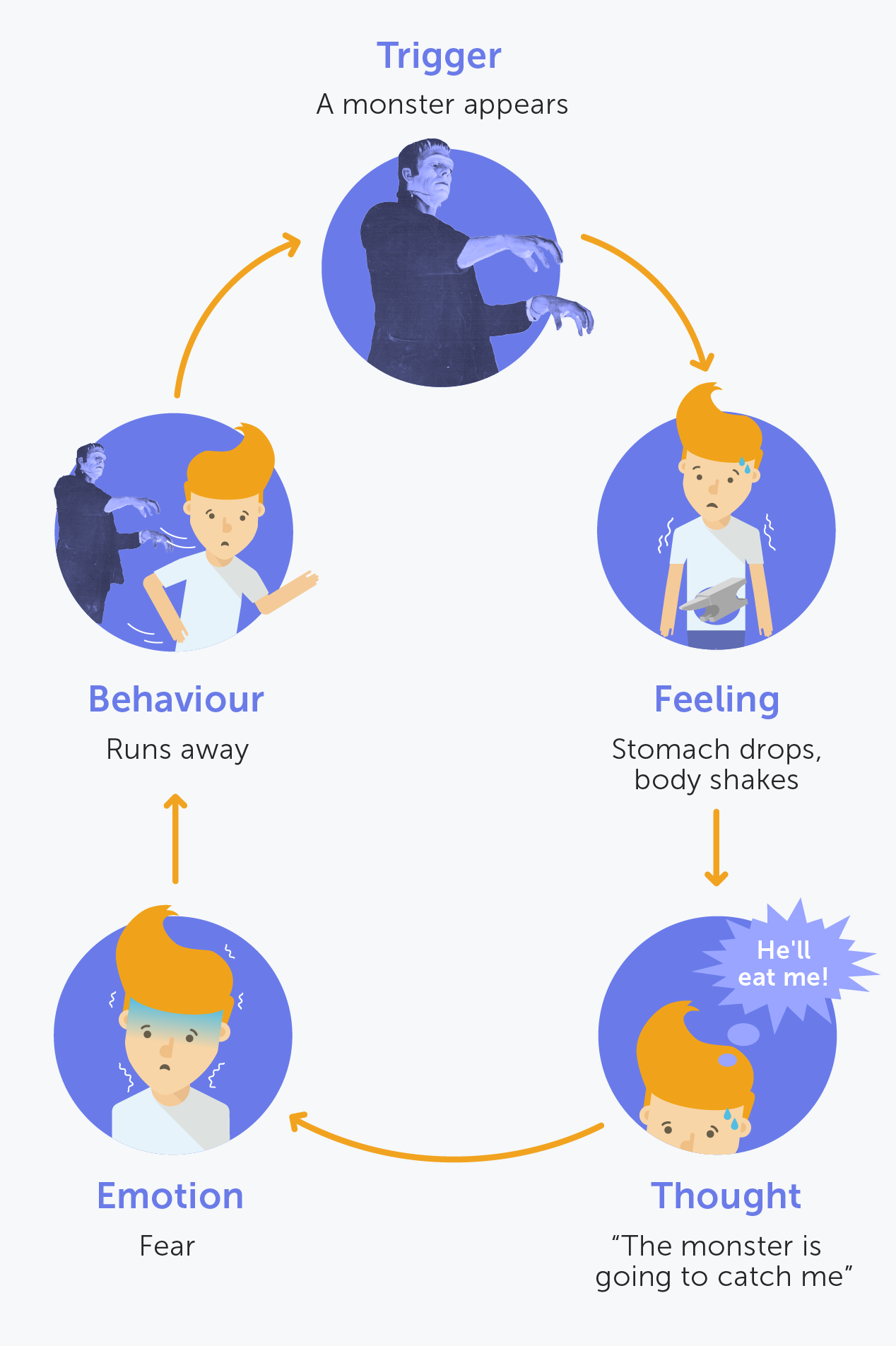Three lessons on emotion in narrative writing:
This week we're launching a new series of lessons that dive into advanced narrative skills.
These lessons go beyond the building blocks of narrative—characters, places, action, dialogue—and explore the more subtle features that make narrative effective.
The first three lessons are about emotion:
Each builds on the one before, but you can treat them as standalone lessons, if you wish. Each takes ~2 hours to complete.
Below are quick previews.
LESSON 1: EMOTIONAL CAUSE AND EFFECT
One challenge in narrative is to write stories with convincing cause and effect, as opposed to a series of seemingly random events.
One solution is to establish a chain of emotion-behaviour loops:

In this lesson we explore how emotion helps us understand what characters want, and how it makes story events meaningful.
We then use the loop model to analyse sequences from graphic novels such as Grasscutter, Persepolis, Drama, and March.
To conclude the lesson, we write a scene about a character who wreaks havoc on a community that has offended them, using a snippet from Grace Lin's Where the Mountain Meets the Moon as model.
The whole checkpoint is ~350 words, but here is a fragment:
This particular fragment shows an emotional response followed by new behaviour. We provide a worked example using the same elements:
LESSON 2: REPRESENTING CHARACTER EMOTION
In the second lesson, we try to expand our suite of tools for representing character emotion, including:
- emotional labels
- emotional verbs
- describing physical feelings
- using metaphor
- describing thoughts and behaviour
- reflecting through the world, and
- emotional dialogue.
We do this by rewriting snippets from texts such as The Graveyard Book, Pet, Written in the Stars, Little Women, and Tom Sawyer.
For example, here's the snippet we use to show emotion expressed through metaphor:
And here is one of the worked examples:
The lessons ends with an open-ended checkpoint piece based on Aisha Saeed's Written in the Stars in which once character tries to figure out what another character is thinking and feeling.
LESSON 3: EVOKING EMOTION IN THE READER
Finally, the hardest skill of all: how do you write narrative that evokes emotion in the reader?
Students begin by reflecting on their emotional responses to a series of photos and paintings.
We establish four dimensions of reader emotion:
- Interest
- Mood
- Empathy
- Contrasting emotion
And we analyse how a range of snippets (from sources such as Neverwhere, Rocket Boys, The House on Mango Street, Furia, and Watership Down) perform on these dimensions:
- What gets our attention?
- What creates the atmosphere?
- How do the characters feel?
- Do we as readers feel emotions beyond what the characters feel?
For example, this mood-setting description from Neverwhere:
The lesson ends with a challenging piece of writing.
Students are asked to evoke emotion in the reader by describing a scene in which a character who has been suffering is cared for by another.
To scaffold the checkpoint, we compare Harry grieving Cedric's death in Harry Potter and the Goblet of Fire with Hazel's death in Watership Down.
We focus in particular on the effect of straining to describe emotion vs the power of understatement.
For example, this passage in Harry Potter:
Compared to this passage in Watership Down:
And this fragment from the worked example:
Why go so deep on one topic?
It's not really one topic because emotion touches on cause and effect, conflict, contrast, point of view, goals, poetic devices, and more.
Emotion is essential to effective narrative. Character emotions give meaning to events, and we read stories in order to have emotional experiences—even if our only emotion is interest.
Finally, emotion is a fascinating topic in its own right: why do we do what we do and feel the way we feel? And how do elements of art work together to make us feel particular emotions?
So yes, it's a deep dive but one that's worth the effort, and there's more to come.
Next up: character goals and motivations!









